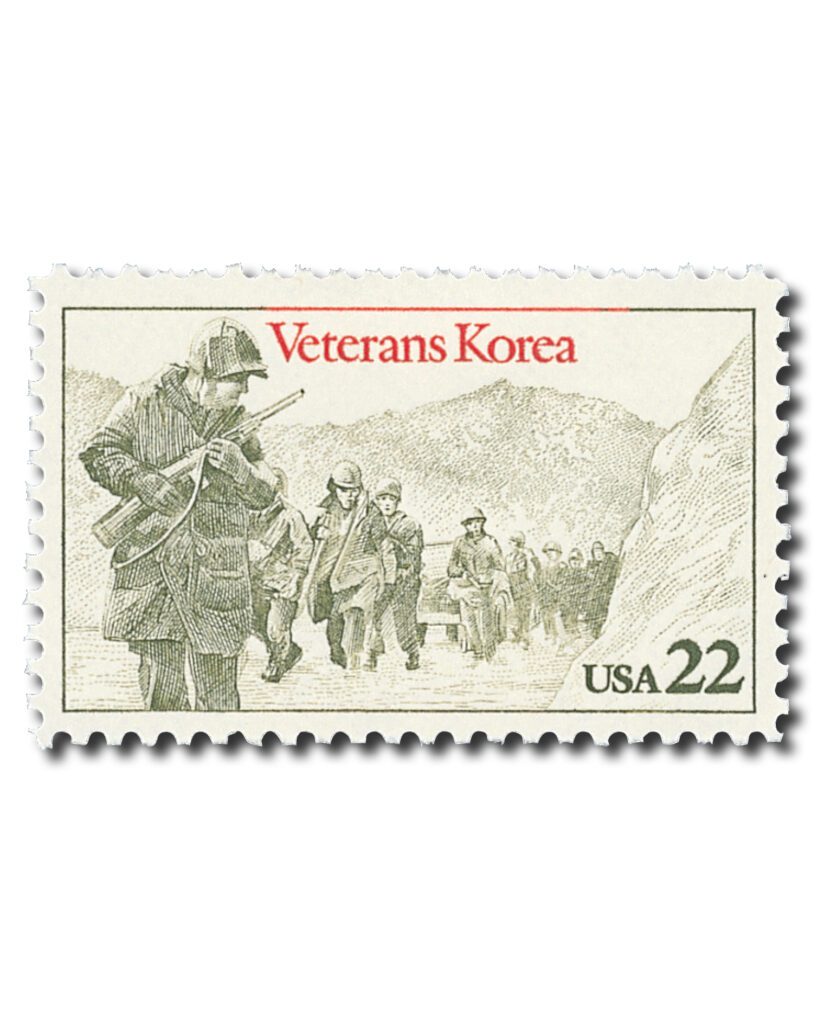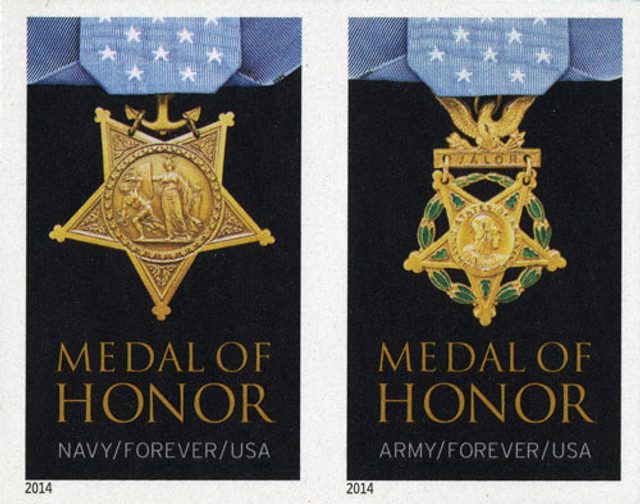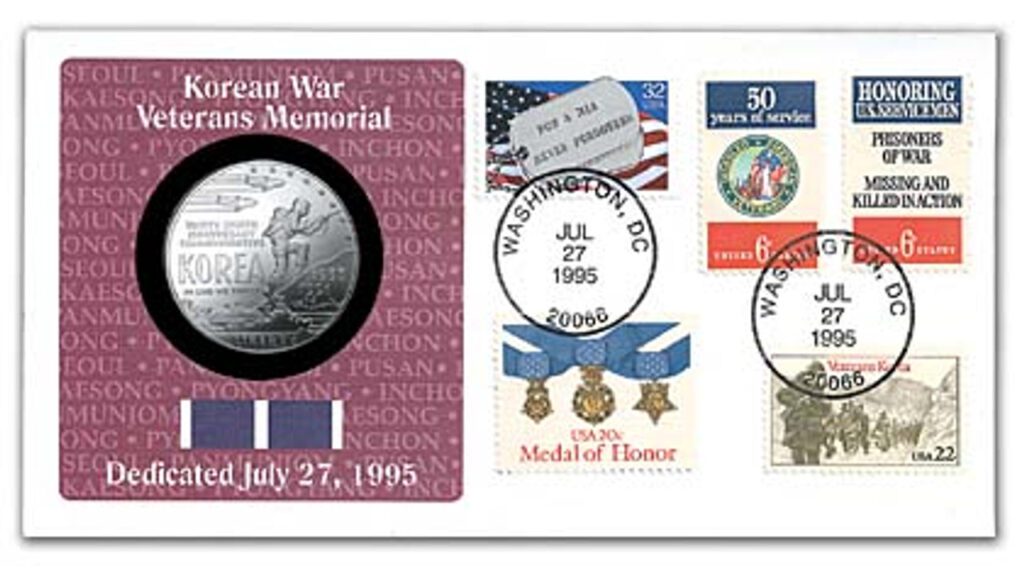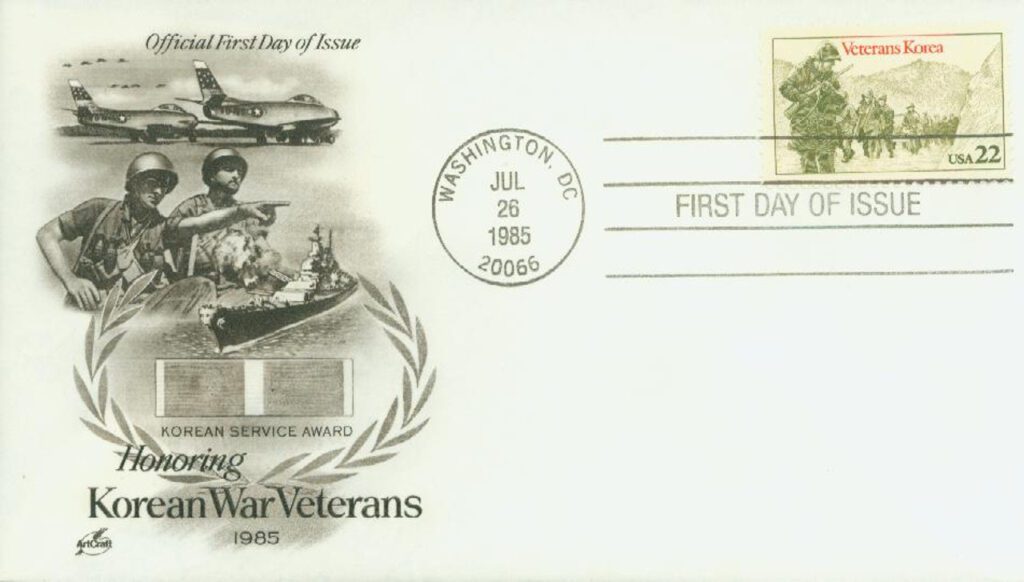On June 27, 1950, President Harry Truman announced that America would send troops to aid South Korea.
As World War II came to an end, the Allied leaders discussed the fate of the Japanese Empire. Korea had been an imperial colony since 1910 and was one of the areas under consideration. At a meeting in Cairo in 1943, it was decided the US would occupy the southern part of the Korean peninsula, and the Soviet Union would control the north. Two young US colonels chose the latitude line 38 degrees north of the equator as the dividing line. The occupation was supposed to be temporary, and the ultimate goal was for Korea to be “free and independent in due course,” according to the Cairo conference.
The US and Soviet Union began their occupations in 1945. The United Nations planned to oversee joint North-South elections with the hopes of unifying the country. Instead, the Soviet Union supported Kim Il-sung as leader of the Democratic People’s Republic of Korea (DPRK) and refused to hold elections. The US helped elect Syngman Rhee as president of the new Republic of Korea (ROK). Both men wanted a unified nation, but their ideas about the government of Korea differed greatly. Kim had trained with Soviet troops during the war and was sympathetic to communism. Rhee, the country’s exiled leader, was educated in America and opposed communism.
In 1949, the US and Soviet Union withdrew their militaries from the region, but left advisors. Negotiations continued in an effort to unify the nation as the new Korean governments skirmished across the 38th parallel. Members of the DPRK Army were well trained and supplied by the Soviet Union and Communist China. In contrast, the southern ROK forces were poorly equipped and without adequate training.
On June 25, 1950, 75,000 North Korean soldiers poured across the 38th Parallel to begin their takeover of the entire peninsula. Soviet tanks and heavy artillery supported them. The ROK troops had no tanks or weapons to combat tank attacks. Within days, they were pushed south and Seoul, the capital, fell to the DPRK forces. ROK soldiers retreated or defected to the Northern army.

Fearing the invasion would advance the spread of communism worldwide, the United Nations Security Council condemned North Korea’s actions and called for a ceasefire. On June 27, 1950, US President Harry Truman addressed the nation stating that he would send US air and naval forces to help South Korea fight the communist threat. President Truman said, “I felt certain that if South Korea was allowed to fall, Communist leaders would be emboldened to override nations closer to our shores.” While it wasn’t a declaration of war, Congress voted to extend the draft and call up reservists. The Security Council met the following day and approved the use of force against North Korea. And on June 30 Truman agreed to send ground troops.

The US committed the majority of forces in the UN command and led the operation. America’s military had been greatly reduced after World War II because of budget cuts and an emphasis on funding research on nuclear bombs. The military had to be strengthened and reorganized quickly to effectively fight a war.
US forces stationed in Japan were the first to go to Korea. The 21st Infantry Regiment of the 24th Infantry Division was considered the most combat-ready. A task force of 400 infantry supported by about 130 men from an artillery battery was the first to land in Korea. Most of the soldiers and officers had no combat experience, and their weapons were inferior to those of the North Koreans. The mission of Task Force Smith was to hold the enemy as far north as they could for as long as possible. This would allow more time to get men and equipment into the southeastern corner of the nation where the UN command was setting up a defensive perimeter. On July 5, the first battle between the US and North Korea began. Though it was clearly a victory for the North, Task Force Smith slowed down the much larger force for seven hours.
This action was followed by similar battles, as the UN forces retreated. By the time both sides arrived near Pusan, a deep-water port on the southern tip of Korea, UN defenses were built and soldiers and equipment had arrived. The defense of the Pusan Perimeter began on August 4 and lasted more than a month. On September 16, UN forces broke through the enemy’s line and began pushing them back toward the 38th Parallel.
The momentum of the war changed, and the US-backed army retook South Korea and crossed the 38th Parallel. During the course of the fighting, the objective of the war changed from containing the communists in North Korea to defeating them. It looked like the war would be over quickly, and Korea would be united under the US-backed government.
After recapturing South Korea, General MacArthur, commander of the UN army, was given permission to proceed to the northern border at the Yalu River. Communist China, on the other side of the river, called this movement “armed aggression against Chinese territory.” Leader Mao Zedong warned against crossing the 38th Parallel, threatening to intervene on North Korea’s behalf.
US and UN leaders did not take Mao’s threat seriously and did not prepare for combat against the large People’s Volunteer Army (PVA). The Chinese offensive began on October 25 and took the UN command by surprise. After a long, cold winter of fighting, the war was taking place along the 38th Parallel once again.
During this time, General MacArthur supported invading China to destroy supply depots. In a letter, he wrote, “There is no substitute for victory,” and discussed using an atom bomb against Chinese forces. The general had repeatedly gone against his orders from President Truman, and on April 11, 1951, MacArthur was relieved of his duties. General Matthew Ridgway replaced him.

For the remainder of the war, the UN command and PVA were in a stalemate. Negotiations began on July 10, 1951, in an effort to end the war. Both sides agreed to a ceasefire, but the issue of prisoners of war caused the talks to stall. China and North Korea wanted all prisoners to be returned to their home country. The US and its allies wanted prisoners to be allowed to choose whether they wanted to go back or remain in the country in which they were held captive.
The armistice was finally signed on July 27, 1953. Both sides agreed to let prisoners decide where they wanted to live. Former POWs had sixty days to return to their home country. The country was divided along a line close to the 38th Parallel, called the Korean Demilitarized Zone. Today, the 2.5-mile-wide border is still one of the most heavily guarded borders in the world. Since no peace treaty was signed, North and South Korea are still technically at war, in a so-called “frozen conflict.” In recent years, North and South Korea entered into talks to denuclearize and bring a formal end to the war.
| FREE printable This Day in History album pages Download a PDF of today’s article. Get a binder or other supplies to create your This Day in History album. |
Discover what else happened on This Day in History.






How many U.S. casualties in Korea during the ‘conflict’????
I wonder why the author of this article didn’t disclose that ?
Anyone ?
According to Wikipedia 36, 574 killed
103,284 wounded. 7,100 POW’s
When I was a freshman in college my roommate was a wounded marine veteran from Korea. It was clear from our conversations that the US Congress had clearly not supported the troops in country prior to the northern invasion. They had neither ongoing training or any major equipment.